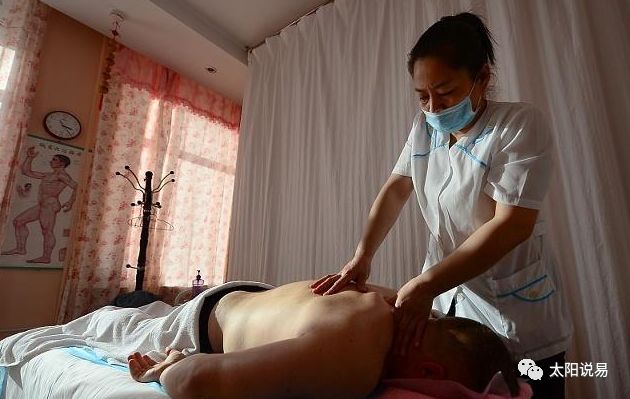In the process of disease development, there exists a pattern of change in the strength of the opposing forces, characterized by the rise and fall of both deficiency and excess. Generally speaking, when the righteous qi (正气, zhèng qì) increases and flourishes, the pathogenic qi (邪气, xié qì) must inevitably decline and weaken; conversely, when the pathogenic qi increases and becomes exuberant, the righteous qi must weaken and diminish. Due to the fluctuations of the righteous and pathogenic forces, the affected body may exhibit two distinct pathological states and symptom responses: deficiency (虚, xū) and excess (实, shí). The
“Su Wen: On the Differentiation of Deficiency and Excess”
states: “When the pathogenic qi is strong, it is excess; when the essence qi is depleted, it is deficiency.” This deficiency and excess refer to two different pathological states.

1. Deficiency Syndrome (虚证, xū zhèng)
1. The term deficiency primarily refers to insufficient righteous qi, representing a pathological response where the deficiency of righteous qi is the main contradiction. It is mainly manifested as a decline in bodily functions and a weakened ability to resist disease, making it difficult for the righteous qi to combat the pathogenic qi, resulting in less severe pathological reactions. Clinically, this often presents as a series of symptoms indicating deficiency or decline. The clinical manifestations include various forms of deficiency in yin (阴, yīn), yang (阳, yáng), qi (气, qì), and blood (血, xuè).
2. Common symptoms include: fatigue, pallor, a sallow complexion, palpitations, shortness of breath, spontaneous sweating, night sweats, five hearts heat (五心烦热, wǔ xīn fán rè), or aversion to cold with cold limbs, loose stools, frequent urination or incontinence, pale and tender tongue, weak and slow pulse, or five hearts heat, emaciation with red cheeks, dry mouth and throat, red tongue with little coating, and thin rapid pulse. These symptoms often arise from bodily weakness or chronic diseases that deplete essence qi; or from excessive sweating, vomiting, diarrhea, or significant blood loss that injures the body’s qi, blood, fluids, or yang qi, and yin essence. The clinical characteristics indicate a deficiency of righteous qi leading to a decline in bodily functions.

2. Excess Syndrome (实证, shí zhèng)
1. The term excess primarily refers to exuberant pathogenic qi, representing a pathological response where the excess of pathogenic qi is the main contradiction. It is mainly manifested as both the pathogenic force and the body’s resistance being relatively strong, with the organ functions being hyperactive, or the pathogenic qi being strong while the righteous qi remains intact, allowing for vigorous resistance against the pathogenic qi. The struggle between the righteous and pathogenic forces is intense, leading to pronounced pathological reactions, which clinically present as a series of vigorous excess symptoms.
2. Common symptoms include: abdominal distension and pain with tenderness, chest tightness and irritability, and in severe cases, confusion and delirium, coarse breathing, excessive phlegm, constipation or diarrhea, urgency and heaviness in the lower abdomen, difficulty urinating or painful urination, or high fever, with a rough tongue and thick greasy coating, and a strong pulse. These symptoms often arise from the invasion of external pathogenic factors or from the retention of phlegm, food, water, or blood within the body. The clinical characteristics indicate an excess of pathogenic forces leading to a series of hyperactive symptoms.

3. Mixed Deficiency and Excess (虚实错杂, xū shí cuò zá)
The fluctuations of the righteous and pathogenic forces can produce not only pure deficiency or excess pathological changes but also often lead to mixed deficiency and excess pathological responses in certain long-term, complex diseases. This is due to the mutual struggle between the righteous and pathogenic forces, where both exist simultaneously.
1. Deficiency with Excess: This refers to a pathological state primarily characterized by deficiency of the righteous qi, but also accompanied by excess of pathogenic qi. For example, in cases of spleen yang deficiency (脾阳不振, pí yáng bù zhèn), where the spleen fails to transform and transport fluids, leading to edema due to the stagnation of dampness. The pathogenic excess is due to the spleen’s failure to function properly, hence the pathological changes are primarily deficient, with the excess being secondary.
2. Excess with Deficiency: This refers to a pathological state primarily characterized by excess of pathogenic qi, but also showing signs of deficiency of the righteous qi. For example, during the progression of an externally contracted febrile disease, due to the exuberance of pathogenic heat, the body fluids are scorched, leading to a syndrome of excess heat injuring fluids and both qi and yin being harmed. This is classified as excess with deficiency. Although the primary pathology is excess, the deficiency of fluids and qi indicates a secondary deficiency.

4. Transformation Between Deficiency and Excess (虚实转化, xū shí zhuǎn huà) The state of deficiency and excess in a disease can change as the forces of righteousness and pathogenicity struggle against each other. This can lead to pathological changes from excess to deficiency or from deficiency to excess.
1. From Excess to Deficiency: This refers to a condition where an excess syndrome, due to improper treatment or mismanagement, leads to prolonged illness. Although the pathogenic qi gradually recedes or residual pathogenic factors remain, the body’s righteous qi and organ functions have been damaged, resulting in a series of deficiency-type pathological responses.
2. From Deficiency to Excess: This refers to a condition where the righteous qi is fundamentally deficient, and the physiological functions of the organs decline, leading to the inability of qi, blood, and fluids to metabolize normally, resulting in stagnation of qi, blood stasis, and phlegm retention as pathogenic excess within the body. This excess is caused by deficiency, hence termed deficiency leading to excess. Common clinical examples include spleen and kidney yang deficiency leading to edema or ascites due to dampness retention.

5. True Deficiency and False Excess (虚实真假, xū shí zhēn jiǎ) Clinical symptoms are the basis for determining the deficiency and excess of a disease; however, clinical symptoms are merely the external manifestations of the disease. In special circumstances, certain phenomena may arise that do not correspond to the essence of the disease, leading to false representations that do not reflect the true deficiency or excess of the disease. This gives rise to conditions such as “true deficiency with false excess” and “false deficiency with true excess”.
1. True Deficiency and False Excess: This often arises from weakness of the righteous qi, insufficient qi and blood in the organs, and functional decline. Since deficiency is the essence, symptoms such as reduced appetite, fatigue, a swollen and tender tongue or moist coating, and a weak and thin pulse can be observed. At the same time, symptoms such as abdominal distension and pain may also appear, which are false excess manifestations. This is what the
“Jing Yue Quan Shu”
refers to as: “In true deficiency, one may see signs of excess”.
2. False Deficiency and True Excess: This often arises from heat accumulation in the stomach and intestines, phlegm and food stagnation, or damp-heat accumulation leading to significant blockages, preventing the smooth flow of qi and blood. For example, in cases of heat accumulation in the stomach, one may observe symptoms such as constipation, abdominal fullness and pain with tenderness, tidal fever, and delirium, which are manifestations of true excess. However, there may also be signs of mental fatigue, reluctance to speak, but with a high-pitched voice, shortness of breath, and physical fatigue that improves with slight movement, as well as diarrhea that brings relief, which are manifestations of false deficiency.

In summary, the differentiation between deficiency and excess can be summarized as follows: 1. In the early and middle stages of externally contracted diseases, or in cases of phlegm, food, blood, or water-related pathogenic factors, these are often excess syndromes. In the later stages of externally contracted or internally injured diseases, these are often deficiency syndromes. 2. Individuals who are robust, with a loud voice and strong breath, are often excess syndromes. Those who are weak, with a low voice and timid breath, are often deficiency syndromes. 3. Painful areas that resist pressure, a rough tongue, and a strong pulse are often excess syndromes. Painful areas that prefer pressure, a pale and tender tongue, and a weak pulse are often deficiency syndromes.

